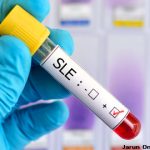
HelloRF Zcool / shutterstock.com
CHICAGO—The promise of precision medicine—the tailoring of treatment to a given patient based on genetics and other factors—has probably been best illustrated in oncology, with therapies targeted specifically to markers expressed on tumors. But rheumatology is in the thick of precision medicine as well, said Judith James, MD, PhD, chair of the arthritis and clinical immunology program at the Oklahoma Medical Research Foundation in Oklahoma City.
Compared with other specialties, rheumatology has historically had the highest number of biomarker tests approved by the U.S. Food & Drug Administration, mainly because so many autoantibody tests are used. At the ACR State-of-the-Art Clinical Symposium in April, Dr. James showed how new lupus research is attempting to fuse genetics and other data into practical information that can be used patient-by-patient in the clinic.
Lupus Subsets
This will benefit patients across the rheumatology sphere, but especially in systemic lupus erythematosus (SLE), which manifests in many ways. In the same waiting room, Dr. James said, one patient could mainly suffer from fatigue that makes daily errands difficult, while another’s kidneys have shut down, forcing them onto dialysis.
“The big challenge in lupus is that we have a lot of heterogeneity,” she said. “We hope we can start taking lupus patients and finding different subsets.”
In one of the largest genetic lupus studies published last year, 50,000 unique parts of the genome were interrogated in 27,000 people, including patients and controls.1 Genetic associations, such as tumor necrosis factor, alpha-induced protein 3 (TNFAIP3), signal transducer and activator of transcription 4 (STAT4) and tyrosine kinase 2 (TYK2), were identified. And Dr. James said researchers are also beginning to see novel associations in African-Americans and Hispanics that haven’t been seen before.
“We have identified genetic associations that may account for more than 50% of the heritable risk of lupus among patients of European-American descent based upon these studies and the other published data,” she said.
But genetics tell only part of the story, she said.
“Genetics are usually what we think of with precision medicine,” she said. “I think that what we’re learning from the genetics in our diseases is that genetics alone are probably not going to be all we need to be able to inform us about how to treat our patients.”
In studies based on the Dallas Pediatric SLE Cohort, clinical and blood transcriptional profiles were collected from 158 pediatric patients and 48 healthy controls over time for up to four years, with SLE Disease Activity Index components and medication use recorded for every visit.2 (The Dallas group has modules available that allow clinicians from elsewhere to enter data from their own patients to see their risk of flare.)



